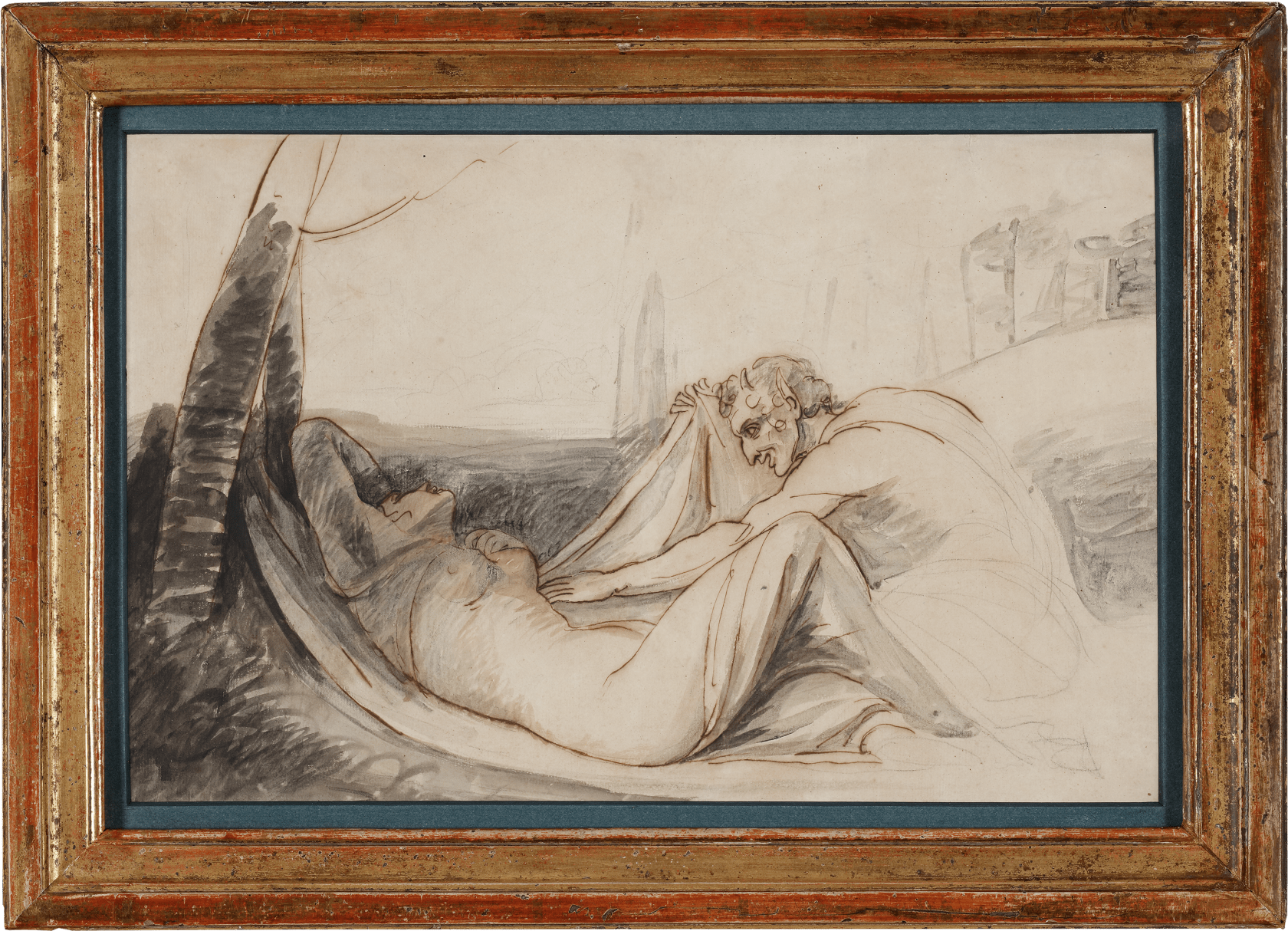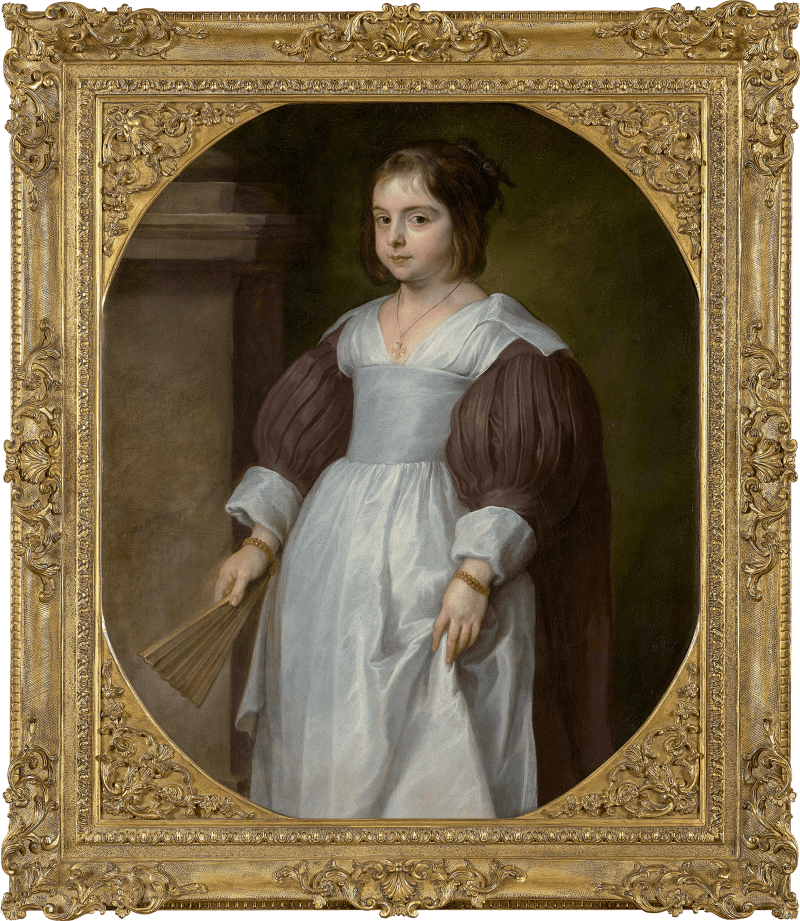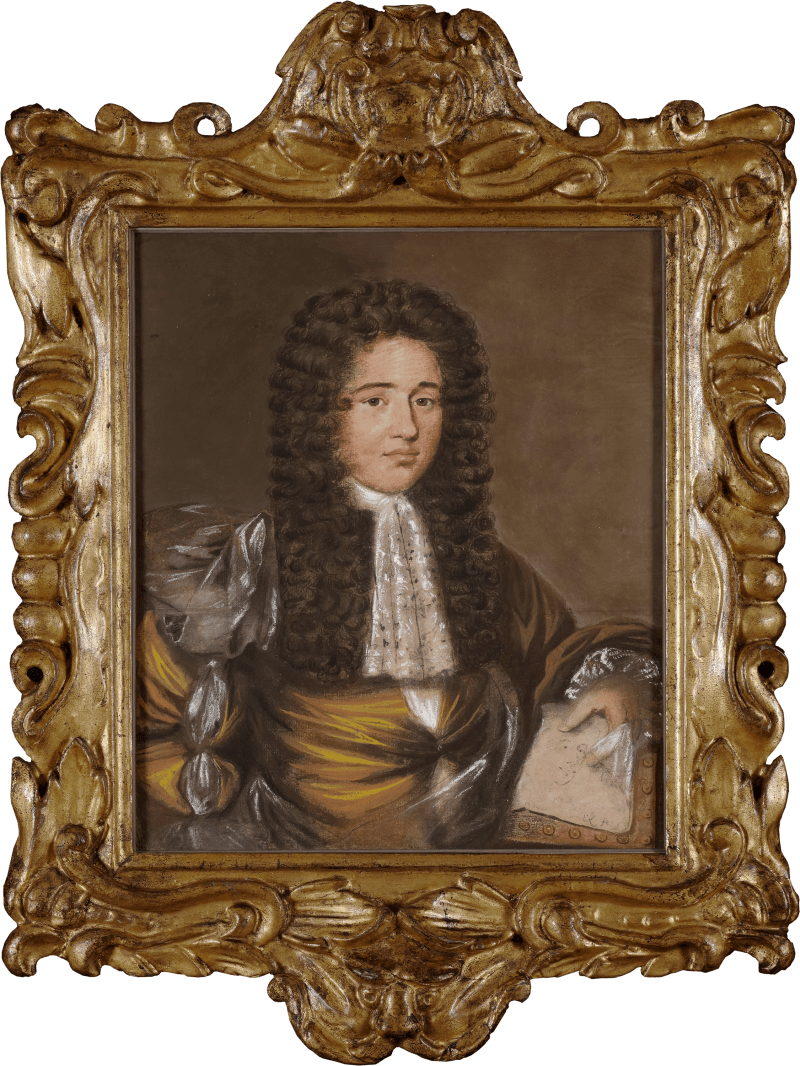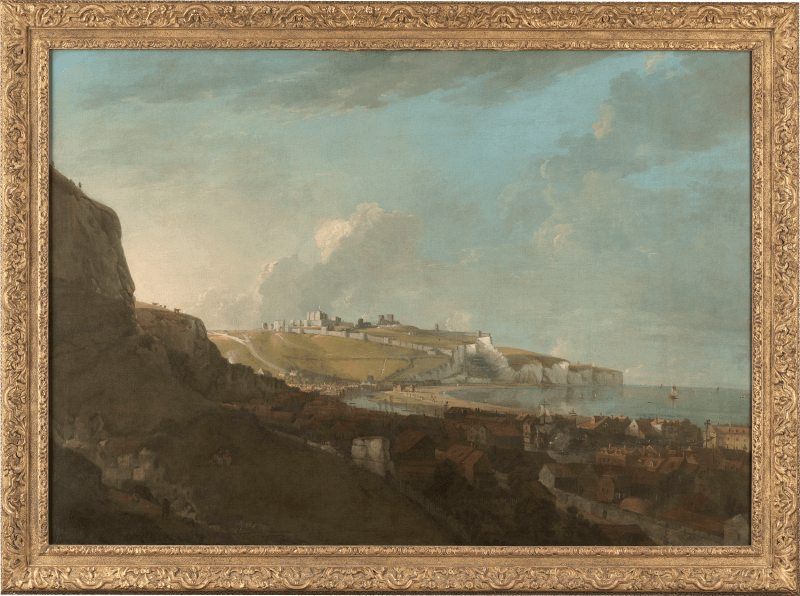Inspired by Titian’s painting The Pardo Venus, this beguiling drawing by George Romney has in the past been considered a loosely veiled representation of the artist and his mistress Thélassie in a moment of intimacy.
The composition is based on the right-hand section of Titian’s monumental painting (fig.1), which is thought to depict the seduction of Antiope, daughter of the King of Thebes, by Jupiter in the form of a satyr. Romney almost certainly encountered the original composition at the Louvre, when he visited Paris in late summer 1790 with his friend and biographer William Hayley. A loose, spontaneous sketch of the Titian painting is also recorded in one of Romney’s sketchbooks from this date, which further indicates he studied the painting first-hand and not from a print.[1]
The artist rarely referenced Old Master paintings so specifically in his drawings, which led the Romney scholar Alex Kidson to question whether the present work was of special significance to the...
Inspired by Titian’s painting The Pardo Venus, this beguiling drawing by George Romney has in the past been considered a loosely veiled representation of the artist and his mistress Thélassie in a moment of intimacy.
The composition is based on the right-hand section of Titian’s monumental painting (fig.1), which is thought to depict the seduction of Antiope, daughter of the King of Thebes, by Jupiter in the form of a satyr. Romney almost certainly encountered the original composition at the Louvre, when he visited Paris in late summer 1790 with his friend and biographer William Hayley. A loose, spontaneous sketch of the Titian painting is also recorded in one of Romney’s sketchbooks from this date, which further indicates he studied the painting first-hand and not from a print.[1]
The artist rarely referenced Old Master paintings so specifically in his drawings, which led the Romney scholar Alex Kidson to question whether the present work was of special significance to the artist. As Kidson points out in the catalogue for the 2002 Romney exhibition, shortly before Romney visited Paris, he had initiated an intimate relationship with a French dancer named Thélassie, and it is possible that the present drawing was some form of ‘private confessional.’[2] He further suggests that the features of the satyr, drawn with unusual concern for physiognomic accuracy, convey the idea that this is a self-portrait and that the shadowy features of the woman may well be those of Thélassie. This is entirely plausible—not least because Thélassie often modelled for Romney in the 1790s; indeed, his son later exaggerated that she appeared in all his father’s later works.[3]
[1] Art Flat b6.70, Folger Shakespeare Library, Washington, D.C.; see Romney Dixon, Y. (1998). ‘Designs from Fancy’: George Romney’s Shakespearean Drawings, exhibition catalogue, Folger Shakespeare Library, Washington, D.C.
[2] Kidson, A. 2002. George Romney 1723-1802. Exhibition catalogue. London: National Portrait Gallery, p. 207, no. 126
[3] Hayley’s ‘list of Romney’s letters to WH’, Add. Mss. 30805, British Library, p. 11.











